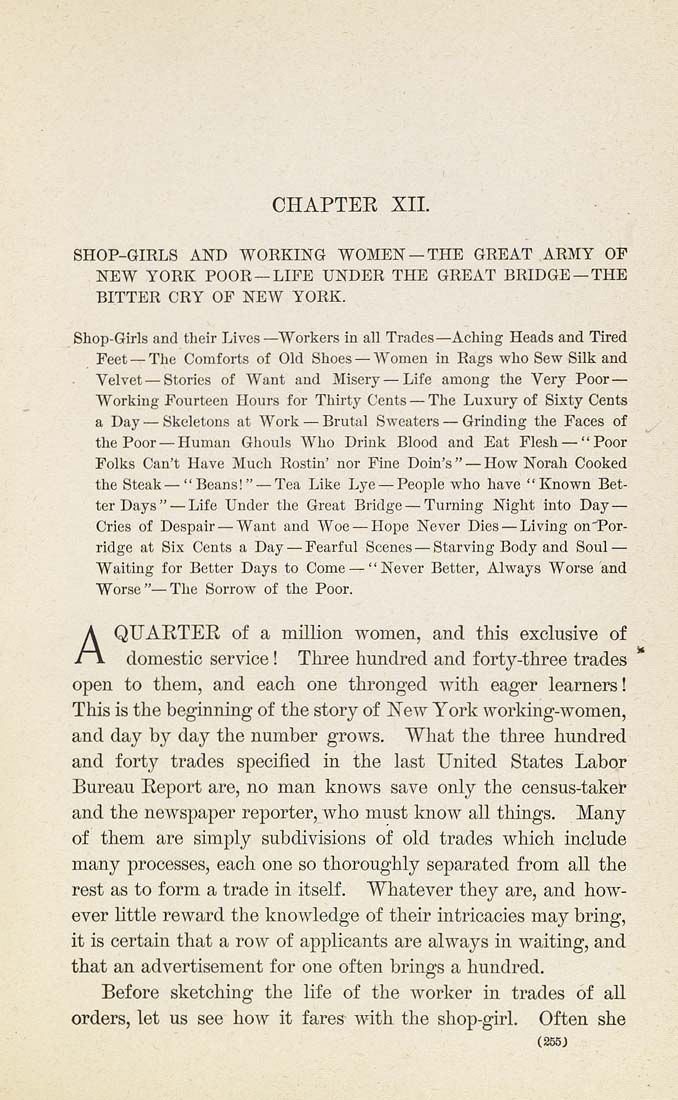CHAPTER XII.
SHOP-GIRLS AND WORKING WOMEN —THE GREAT ARMY OF
NEW YORK POOR—LIFE UNDER THE GREAT BRIDGE—THE
BITTER CRY OP NEW YORK.
Shop-Girls and tJieir Lives-Worlsers in all Trades—Aching Heads and Tired
Feet — The Comforts of Old Shoes — Women in Rags wlio Sew Silk and
Velvet — Stories of Want and Misery—Life among the Very Poor —
Working Fourteen Hours for Thirty Cents — The Luxury of Sixty Cents
a Day — Skeletons at Work — Brutal Sweaters — Grinding the Faces of
the Poor — Human Ghouls Who Drink Blood and Eat Flesh—"Poor
Folks Can't Have Much Rostin' nor Fine Doin's" — How Norah Cooked
the Steak—"Beans!" — Tea Like Lye — People who have "Known Bet¬
ter Days"— Life Under the Great Bridge—Turning Niglit into Day —
Cries of Despair — Want and Woe — Hope Never Dies — Living on'Por¬
ridge at Six Cents a Day — Fearful Scenes — Starving Body and Soul —
Waiting for Better Days to Come — "Never Better, Always Worse and
Worse "— The Sorrow of the Poor.
AQUAETEE of a million women, and this exclusive of
domestic service! Three hundred and forty-three trades
open to them, and each one thronged with eager learners!
This is the beginning of the story of New York working-women,
and day by day the number grows. What the three hundred
and forty trades specified in the last United States Labor
Bureau Eeport are, no man knows save only the census-taker
and the newspaper reporter, who must know all things. Many
of them are simply subdivisions of old trades which include
many processes, each one so thoroughly separated from all the
rest as to form a trade in itself. Whatever they are, and how¬
ever little reward the knowledge of their intricacies may bring,
it is certain that a row of applicants are always in waiting, and
that an advertisement for one often brings a hundred.
Before sketching the life of the worker in trades of all
orders, let us see how it fares with the shop-girl. Often she
(265)
|








